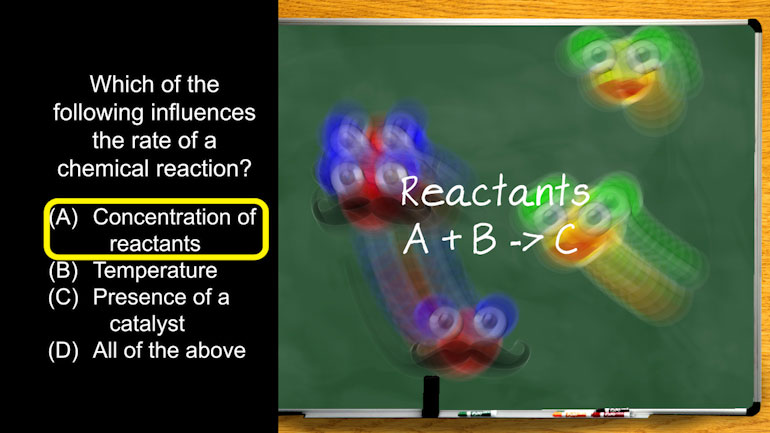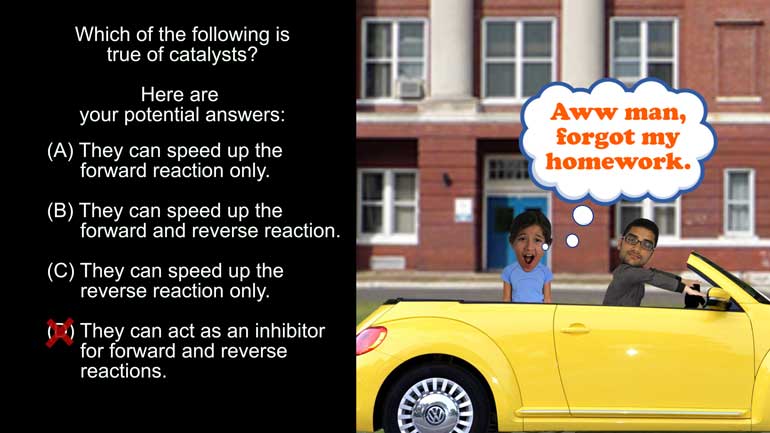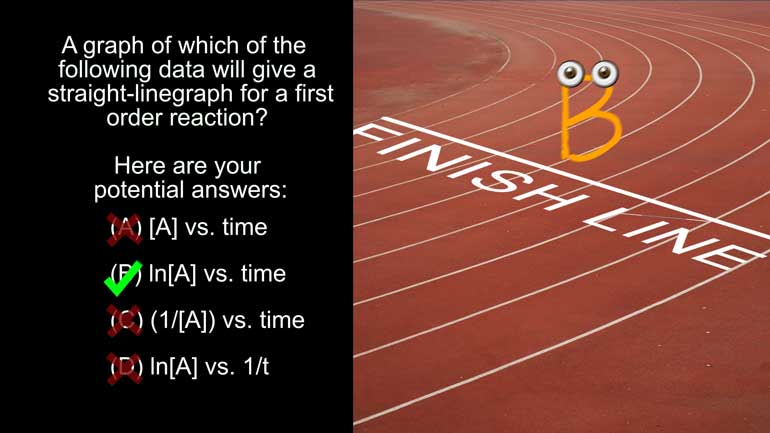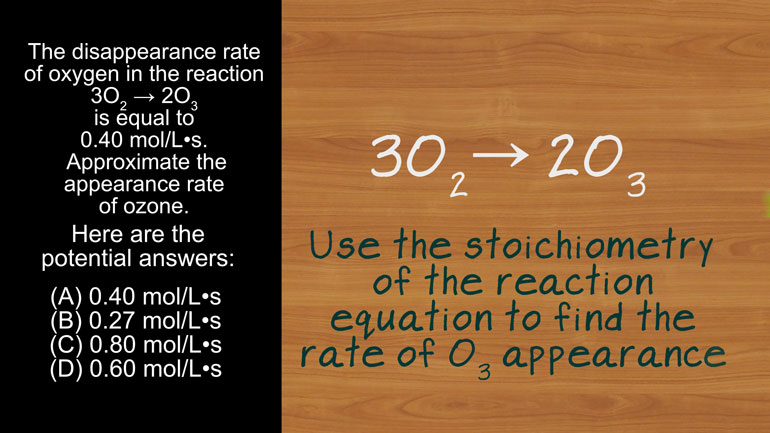ShmoopTube
Where Monty Python meets your 10th grade teacher.
Search Thousands of Shmoop Videos
Chemical Reaction Rates Videos 15 videos
AP Chemistry 1.3 Chemical Reaction Rates. What is the overall order of the reaction?
AP Chemistry 1.4 Chemical Reaction Rates. What are the correct units for a second order rate constant?
AP Chemistry 1.5 Chemical Reaction Rates. What is the rate law for the reaction?
AP Chemistry 2.4 Chemical Reaction Rates 8 Views
Share It!
Description:
Time to calculate some half-life. And no, you can't only half-pay attention.
Transcript
- 00:04
And here’s your Shmoop du jour, brought to you by carbon dating, the Match.com for
- 00:09
scientists. We guarantee we’ll find you someone you’ll [Scientist using a tablet for match.com]
- 00:11
have chemistry with. Okay, here’s today’s question:
- 00:14
Half-life is a measure of the time it takes for half a sample to decay. Radiometric carbon
- 00:19
dating uses the half-life of carbon-14 to estimate the age of a carbon-containing objects.
Full Transcript
- 00:24
What is the rate constant for a first-order reaction that has a half-life of 56.0 seconds?
- 00:30
And here are your potential answers:
- 00:33
So what is “half-life,” aside from the portion of your time you spend on Netflix? [Woman with feet up watching TV]
- 00:39
For the sake of this problem, “half-life” is the amount of time it takes for something
- 00:42
to decrease to half its initial value. As the problem tells us, in chemistry, “half-life”
- 00:47
often means how long it takes for half of a radioactive sample to decay, but it can [Sample decays and clock ticks]
- 00:52
also refer to how long it takes for half of some species to be consumed in a regular chemical
- 00:56
reaction. In this problem, we know that some species [Woman zaps magic stick to a man on stage and he disappears]
- 00:59
is disappearing following a first-order rate law, and half of it is gone after 56.0 seconds.
- 01:05
To find the rate constant, we have to remember the equation for half-life: [Girl using calculator]
- 01:09
t½ = 0.693/k, where k is the first-order rate constant.
- 01:18
If you don’t remember this equation, you can figure it out by starting with the rate
- 01:21
law and solving a first order ordinary differential equation.
- 01:25
That is, if you want to make life way harder for yourself. [Boy studying at his desk]
- 01:27
Might just want to take the plunge and memorize. So, we need to take this equation and plug
- 01:32
in the value of the half-life, t½ or half-life= 56.0 seconds. Solving
- 01:38
for k, we find that the rate constant equals 0.0124 per second.
- 01:42
So that means that A is the correct answer. Now quick, head over to CarbonDating.com before [Scientist using tablet]
- 01:46
you have your half-life – we mean mid-life – crisis.
Related Videos
AP Chemistry 1.3 Chemical Reaction Rates. What is the overall order of the reaction?
AP Chemistry 1.4 Chemical Reaction Rates. What are the correct units for a second order rate constant?
AP Chemistry 1.5 Chemical Reaction Rates. What is the rate law for the reaction?
AP Chemistry 3.2 Laws of Thermodynamics. What is the value for ΔG?
















